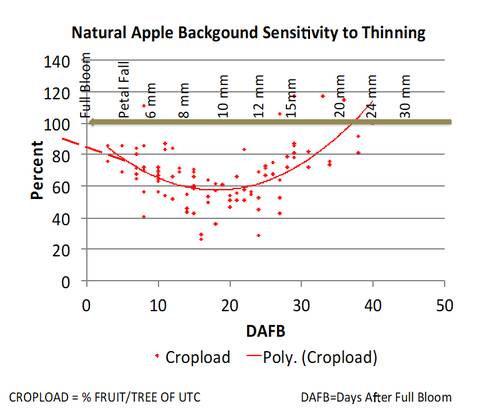Apr 17, 2019Updated apple cropload management models are available
New versions of the Carbohydrate Model and Predicting Fruitset Model are available to apple growers.
Phil Schwallier, Michigan State University Exension Educator, discussed the changes at the Spring Spray Meeting held April 16 in Sparta, Michigan.
Carbohydrate Model
Two important cropload models are now available in new versions: the Carbohydrate Model and the Predicting Fruitset Model. Terence Robinson of Cornell University has completed an analysis of 17 years of thinning trials done in New York orchards. The varieties included in the study were Red Delicious, Gala and McIntosh.


Schwallier said Robinson’s summary concluded that initial flower clusters per tree is negatively correlated to the percent fruitset per cluster. This means that heavy blooming trees will set less fruit per cluster and light blooming trees will set a greater percent set. He also found that initial flower clusters per tree is closely related to final fruit numbers per tree. This means that the greater the number of flower clusters per tree, the greater the final number of fruit per tree. With fewer flower clusters per tree, the final number of fruits per tree is less. To help with the thinning recommendation, the percent of spurs that are floral will need to be known. A heavy blooming block will need a greater dose of thinners.
Also, the predicted thinning efficacy (Thinning Index) will be using a running seven-day carbon balance, not a four-day balance. The best model correlation includes the carbon balance two days before the chemical thinning application, the day of and the four days after a chemical thinning application for a total of seven days. The model imperfectly predicts thinning response and serves as a guide to avoid over-thinning and to give confidence. Users will be required to provide:
- Green tip date
- Gull bloom date
- Relative bloom density (percent of spurs flowering)


The sweet spot for chemical thinning is between 10 and 12 millimeters (Fig. 1); however, an even more precise estimation of this time is between 200 and 250 growing degree-days (GDD) base 40 degrees Fahrenheit after the full bloom date. The model will use bloom date to calculate degree-days and adjust the Thinning Index recommendation.
Predicting Fruitset Model
Schwallier said Duane Green of the University of Massachusetts Amherst developed the Predicting Fruit Set Model, and Jon Clements and Poli Francescatto have developed a new version of this model for free online at https://malusim.org/.
It will work with any NEWA weather stations and is available as an app on your smart phones. It predicts fruit growth models just as before. It also includes spray records, carbohydrate model and irrigation model for your orchard, but can be used alone without these other models. The website also has voice recognition, but you must speak clearly.
Photo at top: Michigan State University Extension educator Phil Schwallier presents information on crop thinning models during a 2016 field day at the MSU Clarsksville Research Station. Photos: Gary Pullano
– Gary Pullano, Managing Editor















